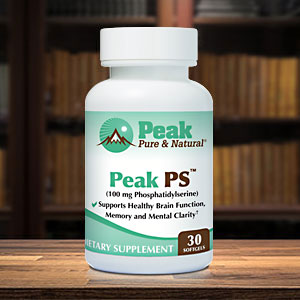“The long goodbye” is often used to describe Alzheimer’s disease.
But I can tell you from personal experience that this same term can describe Parkinson’s disease.
My father died of Parkinson’s when he was 83. We spent ten long years watching him slip away from us, first physically, then mentally.
There is no cure for Parkinson’s. But early detection allows for treatments that may slow the progression of the disease and interventions that can dramatically improve quality of life.
But right now, Parkinson’s is detected by using either clinical rating scales, which can be far from objective, or through neural imaging, which is extremely costly. And, on average, it takes close to three years to get a diagnosis.
I have a particular interest in any new developments that might save other people from what I went through, so I’d like to tell you about a recent study that may seem kind of strange at first, but that holds great promise.
Using ear wax to detect Parkinson’s
Strange as it sounds, a person’s ear wax might reveal that they have Parkinson’s disease, even before any symptoms show up.
What, you may ask, could ear wax possibly have to do with detecting a neurological disease?
It all comes down to two things: volatile organic compounds, or VOCs, and sebum.
Sebum is a waxy, oily substance produced by the sebaceous glands in the skin. It’s what gives you oily skin, but it also hydrates the skin and forms a protective barrier.
Previous research has revealed that sebum from people with Parkinson’s may have a characteristic smell because VOCs released by sebum are altered by disease progression, including neurodegeneration, systemic inflammation and oxidative stress.
Sebum on the skin is exposed to the environment, making it unreliable. But the ear canal is one place where the skin is kept away from the elements — and could produce an accurate diagnosis.
So Chinese researchers Hao Dong, Danhua Zhu and colleagues focused their efforts at screening for Parkinson’s on the sebum in ear wax, which is also easier to sample than sebum elsewhere on the body.
They collected samples from 209 subjects (108 of whom were already diagnosed with Parkinson’s) and analyzed the samples looking for VOCs unique to the Parkinson’s patients.
Sure enough, they found four VOCs that were only present in the ear wax of subjects with Parkinson’s: ethylbenzene, 4-ethyltoluene, pentanal, and 2-pentadecyl-1,3-dioxolane.
They concluded that the presence of these four VOCs is a potential biomarker for Parkinson’s disease.
Catching Parkinson’s early: know the warning signs
More work needs to be done before the artificial intelligence olfactory (AIO) system developed by Dong and Zhu becomes a reliable and efficient tool for early prediction of Parkinson’s.
But there are early warning signs that people often ignore since they resemble signs of aging that we’ve been trained to accept as normal:
Loss of sense of smell. Years before any motor or neurological symptoms show up, sense of smell may begin to diminish. It’s the first sign of dopamine dying off, which happens in later stages of the disease.
Excessive sweating. Parkinson’s causes changes to the sweat glands. Women may mistake this for hot flashes. If your skin and hair are oily when they’ve never been before, it could be a sign.
Changes in handwriting. The slowing down and loss of spontaneous, routine movement is known as bradykinesia. In a person with Parkinson’s, their handwriting is often the first place this shows itself.
Stiff arm. Range of motion is decreased; you can’t swing your arm as much as before when you walk.
Orthostatic hypotension. Dizziness upon getting up too quickly. Again, take note if this is new for you.
Persistent neck pain. Women in particular have reported this as the third-most common warning sign they remember when asked how they first knew they had Parkinson’s.
If you suspect Parkinson’s, talk to your doctor. And don’t be tempted to grab a Q-tip to view your ear wax. You can’t tell anything from its appearance, and you could push ear wax further into your ear canal, causing impaction and potentially damaging the eardrum.
Sources:
Ear wax as a possible screening medium for Parkinson’s disease — Eureka Alert
An Artificial Intelligence Olfactory-Based Diagnostic Model for Parkinson’s Disease Using Volatile Organic Compounds from Ear Canal Secretions — Analytical Chemistry
10 Lesser-Known Parkinson’s Disease Symptoms — Michael J. Fox Foundation
Read full article here




